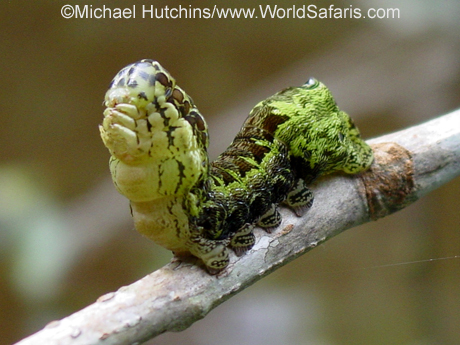There are many things in nature that literally take my breath away and one of these is the phenomenon of mimicry. Mimicry is when one animal species comes to resemble another animal, plant or even non-living object through the process of natural selection. There are many reasons why a species can gain a survival or reproductive advantage from resembling something else, but one of the primary reasons is to avoid being eaten. To avoid detection, an animal can evolve to look like a plant, a rock or some other object. For example, there are even insects that have evolved to look like bird poop. Some animals, like some butterflies, have evolved to look like other butterflies that are distasteful to predators. However, some others try to frighten their predators away by resembling dangerous species. Some harmless flies, for example, have evolved to look like bees or wasps that carry a nasty sting.
One of the best examples of mimicry I’ve seen in my many world travels occurred in Tortugero National Park, Costa Rica. This famous coastal park is best known for its nesting sea turtles. However, it is rich in a wide variety of biological diversity. On the way back from one boat trip into the park, we passed by a log that was sticking up out of the water. I suddenly noticed something on the log that I recognized immediately and called out to the driver to stop. We backed up to the log, where I was able to show the group a caterpillar that resembles a venomous snake—a disguise that can be an effective deterrent to bird predators. As I touched the caterpillar on its back, it reared up, showing a head and eyespots. Even our driver-guide was amazed and said he had never seen anything like that before. This is just another example of how a deep knowledge of nature can help you stumble across the most amazing things.


Recent Comments